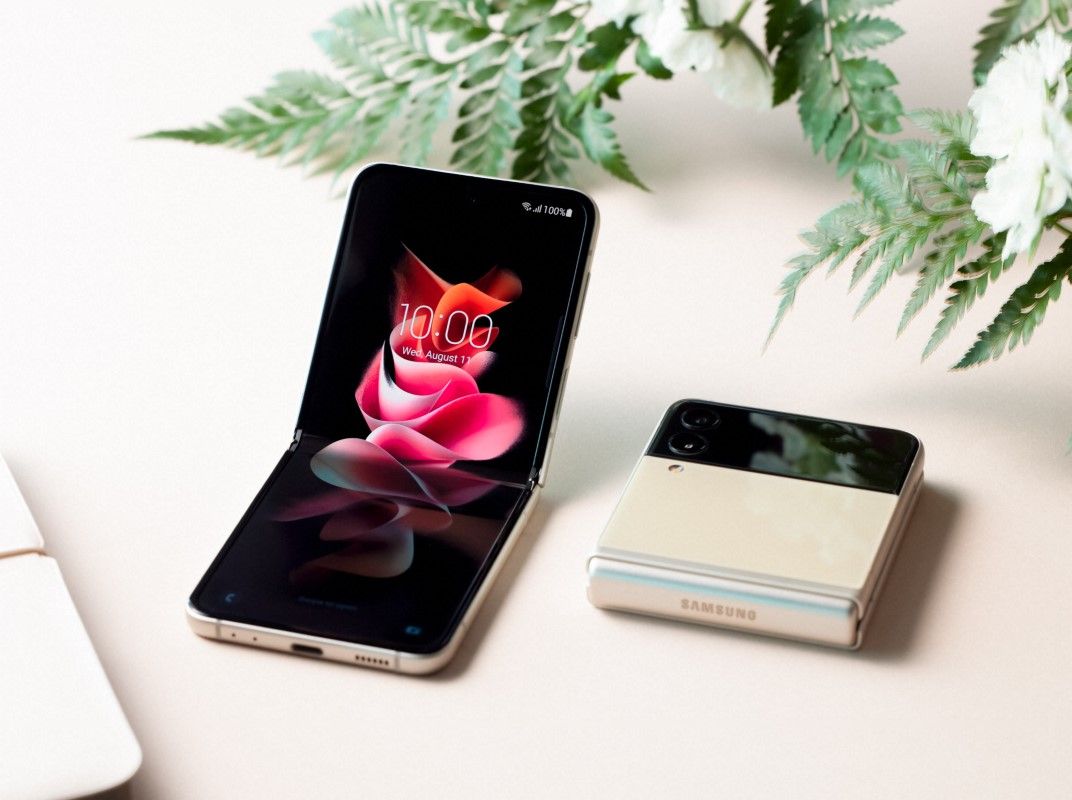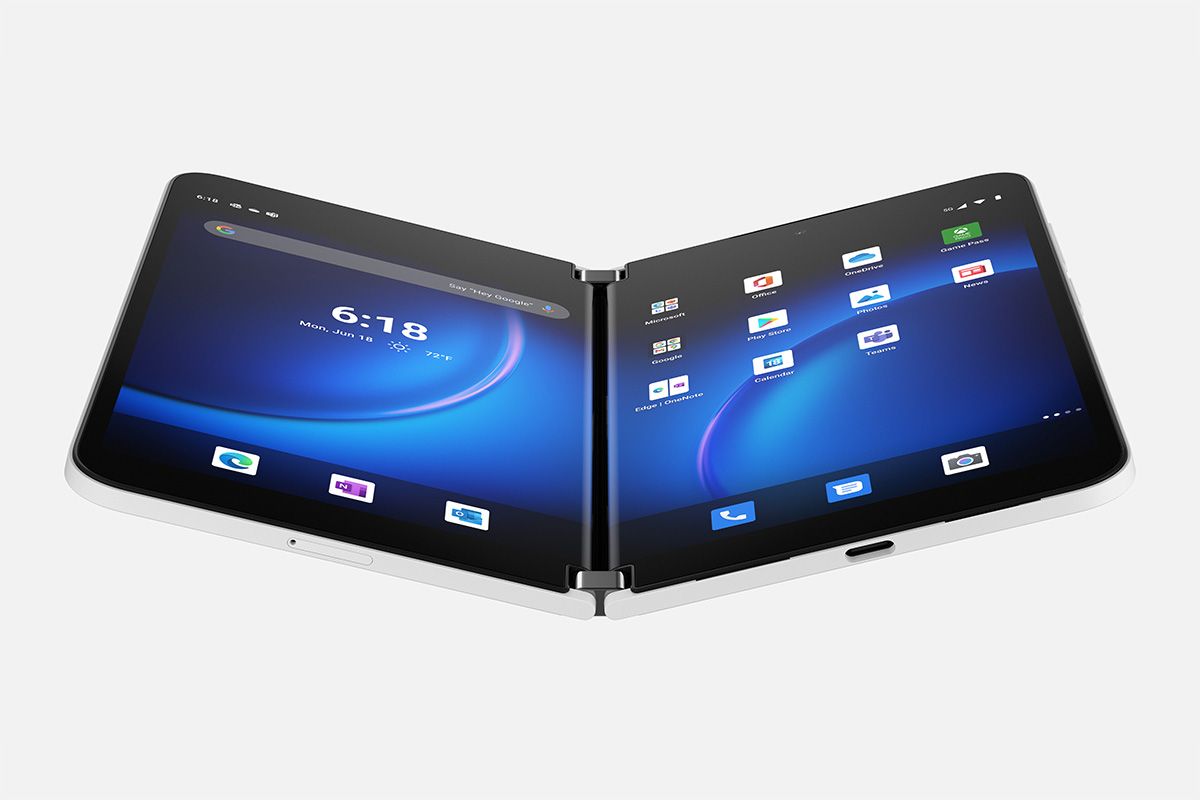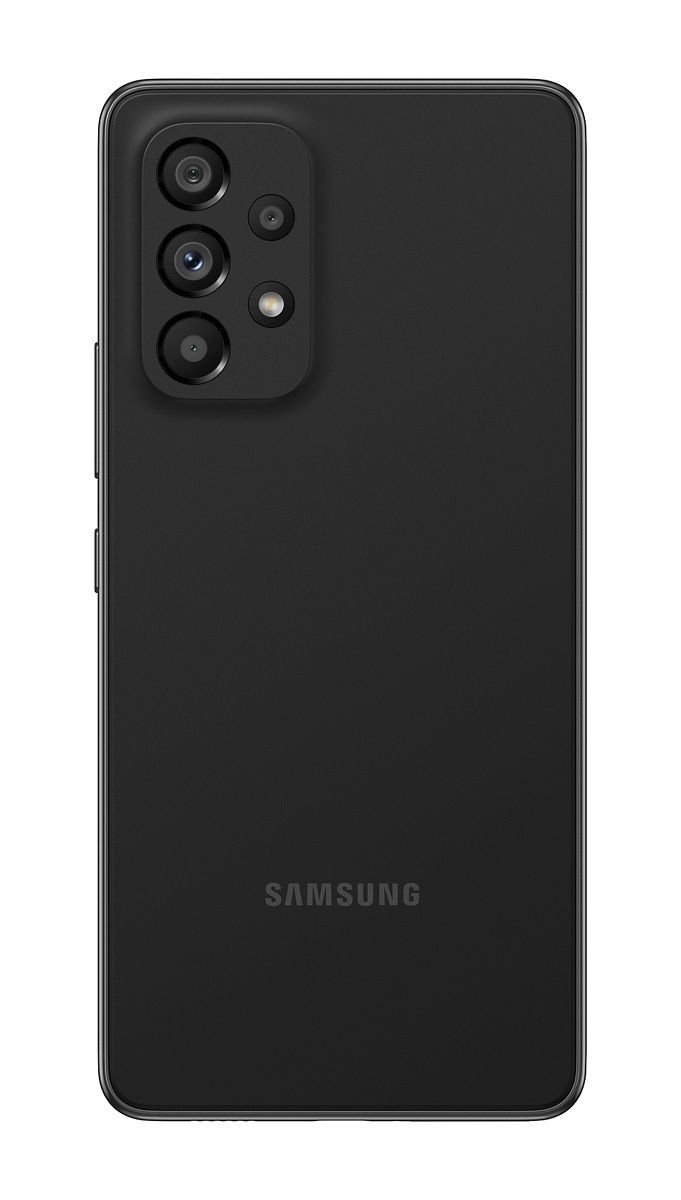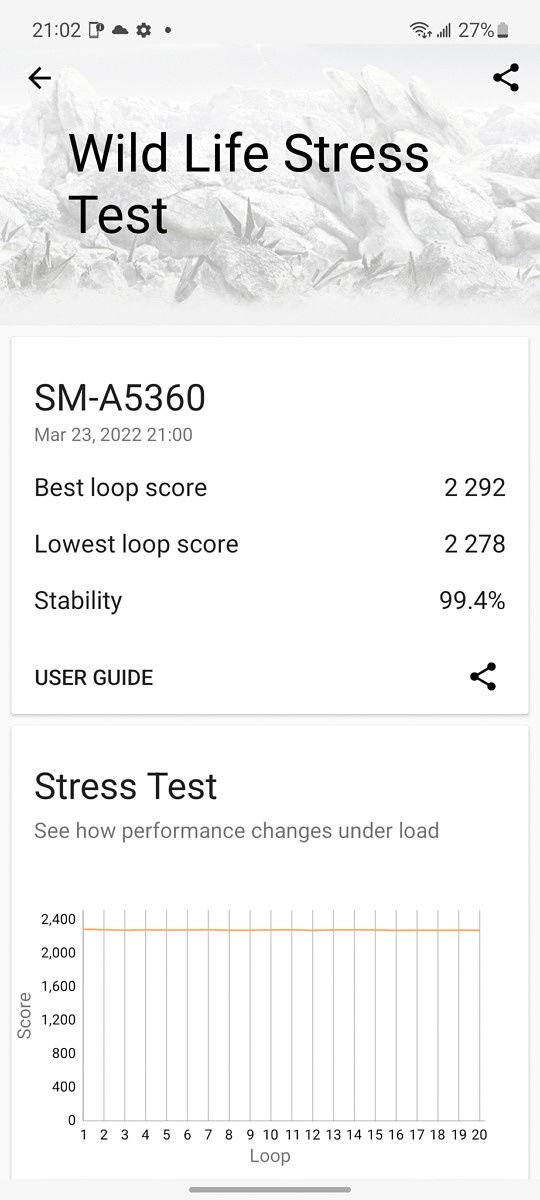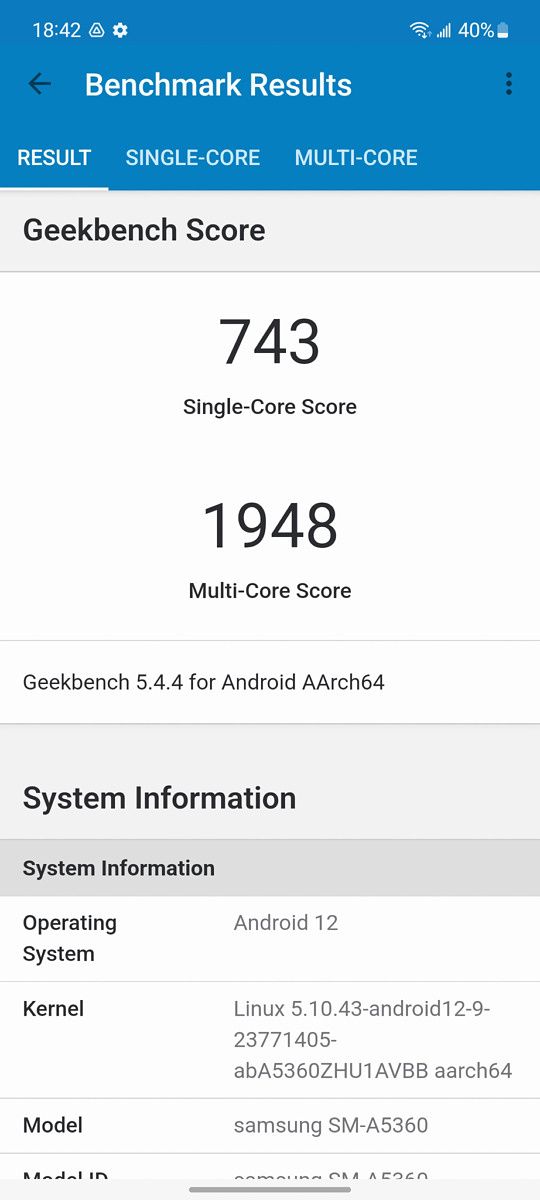Last year was a great one for Android phones, and this year is off to a steady start: we have already seen some excellent flagships and mid-tier devices from the usual big-time players like Samsung, Xiaomi, and OPPO. Vivo and Google ended 2021 very strong and likely will continue the pace, and we can probably expect many more foldables in 2022. In other words, the Android phone scene is as vibrant and lively as ever (especially outside the US). There’s bound to be a good phone at every price range, so no matter your budget or your need, there is a polished, refined Android phone for you. If you need help deciding — this is what we are trying to do with this article.
Navigate this guide:
- Best Android Phone overall: Samsung Galaxy S22 Ultra
- Best for Most People: Google Pixel 6
- Best Mid-tier option: Samsung Galaxy A52 5G
- Best Software and Speed: OnePlus 9 Pro
- Best Point and Shoot Camera: Google Pixel 6 Pro
- Best Overall Camera: Vivo X70 Pro Plus
- Best Gaming Phone: ASUS ROG Phone 5
- Best Large Foldable Phone: Samsung Galaxy Z Fold 3
- Best Small Foldable Phone: Samsung Galaxy Z Flip 3
- Best Stock Android Phone: Google Pixel 6
- Best phone not sold in the US: OPPO Find X5 Pro
- Best for Multitasking: Microsoft Duo 2
Best Android Phone Overall: Samsung Galaxy S22 Ultra

Considering that Samsung’s Galaxy S21 Ultra held this spot for almost all of 2021, Samsung didn’t need to do much for the Galaxy S22 Ultra to claim this spot immediately upon release. But Samsung didn’t rest on its laurels. It brought perhaps the most radical change to a Galaxy S phone yet by making it essentially the new Galaxy Note.
The Galaxy S22 Ultra brings back the awesome and versatile camera system of the Galaxy S21 Ultra, but with superior software processing and computational photography smarts for an even better camera system: shots in low light are less noisy and better balanced; videos are more stable, the zoom prowess even more epic. This is a phone that can grab super sharp and clean 10x zoom images, and even respectably decent 30x zoom images. And while the 100x shots are still not great, they have improved tremendously as well.
There’s a new chip of course — the Snapdragon 8 Gen 1 in the US, China, and India; Exynos 2200 in Europe and many other regions — along with a superior LTPO 2.0 screen that’s more energy-efficient, despite pushing out a higher maximum brightness than last year. The 5,000 mAh battery can go longer this year — this is an all-day phone for all but the most extreme users.
But it’s the addition of the S-Pen stylus that has changed things. Unlike the Galaxy S21 Ultra, which supported an S-Pen that required a separate purchase and had no good place to stay, the Galaxy S22 Ultra’s S-Pen is included with the package and stored in a silo at the bottom of the device, just like the Galaxy Note. In fact, when you consider the design language of the Galaxy S22 Ultra and how it strays from the other two Galaxy S22 devices, it’s clear that this is a Galaxy S phone in name only. In spirit, it is a Galaxy Note.
Throw in Android 12 with four guaranteed years of Android updates and then another year of security updates, and great Samsung software features like Samsung DeX and you have a do-it-all, well-rounded flagship that offers more than what any other phone has to offer. Granted, the Exynos 2200 has some issues, and the 45W wired charging has no practical time benefits over 25W charging, and the vibration motor may feel a little weak. But other than these, the Galaxy S22 Ultra has no other real misses.
- The Galaxy S22 Ultra is the absolute best slab phone right now and it should hold this spot for a long time, thanks to a beautiful screen, awesome cameras and the S-Pen!
|
Features: |
|
|
|
Pros: Cons: |
Also great: Samsung Galaxy S22 Plus

If you find the Galaxy S22 Ultra’s $1,200 price just a tad too high, the Galaxy S22 Plus offers a lot of what made that phone great at a penny under $1,000. You won’t get the S-Pen stylus, nor the 10x Periscope zoom lens, but you still have a beautiful 120Hz OLED screen, an excellent 50MP main camera, solid 12MP ultra-wide lens; and a superb 3x telephoto zoom lens.
The Galaxy S22 Plus is also a bit smaller — its screen is “just” 6.6-inches — without the pointy corners of the Ultra, so it’s almost objectively a more comfortable phone to hold. On the software front, you still get Samsung’s excellent OneUI with all the bonuses that come with it including Samsung DeX; and you also get a top-end SoC (either Snapdragon 8 Gen 1 or Exynos 2200 depending on your region) too. The 4,500 mAh battery here, while not as large as the one in the Ultra, is still enough to power the phone all day, and it’s also rated IP68 for water and dust resistance. Simply put, while the Galaxy S22 Plus is not Samsung’s top slab phone offering, it is flagship enough for most people.
- The Samsung Galaxy S22 Plus may not pack all the bells and whistles of an Ultra, but it's still a very capable flagship with great cameras, screen, and performance.
|
Features: |
|
|
|
Pros: Cons: |
Best Samsung Galaxy Phones for every budget and need
Best Android Phone for most people: Pixel 6

This category is tricky because the phone that tops this list isn’t usually the best phone per se in terms of having all the most premium features. But it’s the best phone for most people, the phone regular consumers should consider first because of the combination of performance, features, and value for money.
And starting at $599, the newly released Google Pixel 6 takes this category by a landslide. Despite costing almost half of the typical flagship phone, there are several key flagship features in the Pixel 6, including Google’s first-ever self-developed SoC, Tensor, a new 50MP camera that, when paired with Google’s camera software prowess, makes for arguably the best main camera around. You also get a relatively large 4,614 mAh battery, a 6.4-inch OLED screen, IP68 water resistance, and a gorgeous, unique design with some very fun colors.
Of course, there are areas of compromise to get this phone down to this price range: the display only refreshes up to 90Hz (but Google’s UI optimization is so good that animations feel smoother than that anyway), there’s no zoom lens, and relatively slow wired and wireless charging. But these compromises are very easy to accept for those who want a phone that looks and feels like a flagship but costs half the price.
But let’s get back to that camera: the Pixel’s cameras have been the best or among the best cameras in the industry for years, despite the fact that the camera hardware in the last couple of Pixels were getting long in the tooth. This is because Google’s awesome computational photography leverages the company’s all-knowing AI and machine learning smarts. Now that the Pixel 6 has camera hardware that’s actually up to 2022 standards, the result is an absolutely stunning camera experience. This is a phone that you can point and shoot and get a great shot almost every time. The ultra-wide camera, however, doesn’t fare as well. It’s fine in a vacuum, just not at the jaw-dropping standards of the main camera.
All that and we haven’t even talked about another major Pixel selling point: this is a pure Google phone, so you can expect to get exclusive Android-Pixel features and the fastest software updates too. And with Android 12 getting one of the biggest visual overhauls in years, now is the best time to have first dibs on all things Android 12. Simply put, the Pixel 6 is the best overall value on this list and the best phone for most people.
- The Google Pixel 6 has perhaps the best camera in smartphones right now -- as well as the best price. Look no further if you are on the market for an Android phone and you don't need all the bells and whistles.
|
Features: |
|
|
|
Pros: Cons: |
Best Mid-Range Android Phone: Samsung Galaxy A52 5G

The mid-range phone scene in North America isn’t as vibrant as in Asia, but thanks to Samsung, there are still some very capable options at that $500-ish range. At this price point in North America, you’d be hard-pressed to find something better than the Samsung Galaxy A52 5G. It’s a sleek, 5G-ready device with Samsung’s polished software, industry-best screen, and IP67 water and dust resistance rating.
While the display refreshes at only 90Hz, it is a 6.5-inch Samsung Super AMOLED panel, so it’s a vibrant screen with colors that pop. The quad-camera system is headlined by a capable 64MP, f/1.8 camera that can produce pleasing photos. The 12MP ultra-wide is solid too if you’re shooting under well-lit conditions. The final two cameras: a pair of 5MP sensors for macro and depth-sensing are just okay. Flip the phone around and you have a capable 32MP selfie camera, so in all, the camera experience here can be considered good at this price range.
The Snapdragon 720G chip here is very capable even in 2022, and the 4,500 mAh battery is enough to keep the phone running all day. You also get stereo speakers, an in-display fingerprint reader, and a 3.5mm headphone jack. While the plasticky body doesn’t feel that premium, at least it comes in a variety of fun colors. On the software front, you get Samsung’s capable OneUI 3.1 here over Android 11 — but Android 12 updates are rolling out for the device, so you shouldn’t have much to worry about. The software and UI feels fluid and mostly on par with a top-notch Samsung experience.
If you’re choosing to go with the Galaxy A52 over, say, a Galaxy S21 Ultra, you’re really only missing the awesome Periscope zoom lens, glass and aluminum body, and a Snapdragon 888. If none of these things matter that much to you, the Galaxy A52 will serve you very well.
- The Galaxy A52 is Samsung's mid-ranger that offers the Samsung experience for significantly less money than the Galaxy S phones.
|
Features: |
|
|
|
Pros: Cons: |
Best Android Phone for software and speed: OnePlus 9 Pro

OnePlus is a brand that’s always been about speed, and the OnePlus 9 Pro is once again the fastest phone on the market. Everything – from the near-instantaneous speed at which apps launch to how the notification panel whips up and down along with your finger swipes – even the UI here has been optimized for speed.
But even going beyond speed, I’ve been a fan of OnePlus’ Android skin, OxygenOS, for years because it offers plenty of customization and shortcut gestures galore. Want to use multiple different icon packs on one home screen? Or change the accent color scheme of your app drawer? Or quickly launch an app action by long-pressing the fingerprint sensor? OxygenOS offers more ways to use Android, much more than Google’s own stock UI.
But of course, the OnePlus 9 Pro is a flagship phone and it comes with hardware to match too. The OnePlus 9 Pro offers a 6.7-inch 1440 x 3216 OLED display with a refresh rate of up to 120Hz. The display doesn’t quite get as bright as a Galaxy S21 Ultra, but otherwise, vibrancy and that visual oomph feel similar. This is a gorgeous-looking screen on which you’d want to watch videos. Powering the phone is a Snapdragon 888 with 8 or 12GB of RAM, as well as a 4,500 mAh battery.
The “Hasselblad” camera system is headlined by a 48MP, f/1.8, 1/1.43″ main camera, along with a 50MP ultra-wide shooter and an 8MP 3.3x telephoto zoom lens. There’s also a 2MP monochrome sensor that, unfortunately, doesn’t do much. Look at this phone as a triple-camera array.
But the good news is the cameras are quite good. Hasselblad has apparently helped fine-tune some of the color science and for the most part, I quite like the shots captured by the OnePlus 9 Pro. You can also zoom in and out in the camera app without seeing noticeable stutters when switching between lenses the way the Galaxy S21 Ultra does. Like we said earlier, OnePlus phones just generally zip around faster and more fluidly.
Another thing that’s very fast? Charging speeds. The OnePlus 9 Pro ships with a 65W fast charging brick that can top up the phone from 0-100% in 30 minutes, and the phone also supports wireless charging up to 50W, which can pump the phone from empty to full battery in 43 minutes. You will need the official OnePlus wireless charger to get those speeds, however.
- The OnePlus 9 Pro has the smoothest and most fluid UI around in Android -- and dare we say it, any phone.
|
Features: |
|
|
|
Pros: Cons: |
Best Point and Shoot Camera phone: Google Pixel 6 Pro
![]()
The first three Google Pixel phones were hands-down the best still camera phones around, mostly because Google’s computational photography was so far ahead of the game at the time. In the years since, other phone brands have stepped up their computational photography game. Add in the fact that Google didn’t bother upgrading its camera hardware for the Pixel 4 and 5, which meant Google’s phone was no longer the undisputed best camera phone around.
Google has regained the crown (at least in this category of best point-and-shoot) with the Google Pixel 6 Pro, because it finally upgraded camera hardware to a 50MP Samsung GN1 sensor with a large image sensor size and fast aperture. While the Pixel 6 Pro lacks the zooming prowess of a Samsung Galaxy S21 Ultra, the awesome video capabilities of an iPhone 13 Pro, or even the all-around range of a Vivo X70 Pro Plus, it’s the best phone for people who just want to point their phone, tap shutter button, and then get a shot they can post to social media immediately without tweaks or edits.
The difference is in software. Google’s software smarts — aka computational photography — make taking photos a joy, in that you don’t really stress too much, just point and shoot and you’re going to get a shot that’s almost always perfectly balanced, with just the right amount of boosted colors and contrast (without going overboard like Samsung), accurate white balance, and enough sharpness. Even if you didn’t frame properly and accidentally captured some unwanted people, Google’s “Magic Eraser” trick can help you fix that in post with a couple of taps. Real-time dials to adjust the lighting in both subject and background are also huge bonuses. There’s no minor shutter lag like you’d get in a Galaxy S21 Ultra, or that slightly artificial over-processed look from a Huawei. This is a camera that just works.
But there’s more to a phone than just the camera, so you can rest assured that the Pixel 6 Pro offers top-tier performance in all the other bits too. The 6.7-inch, 120Hz display looks great, and because it’s an LTPO panel, it has a variable refresh rate to conserver battery. All of us at XDA are also fans of the unique design of the device, particularly that striking visor and the bold colors (unless you buy the black model, which still looks cool in an understated vibe). With 12GB of RAM, this is the first Pixel phone that actually isn’t lacking in the memory department, and then there’s that Google Tensor SoC, the first such chip made by Google — a sign of things to come in the future of the smartphone space.
Whether it’s scrolling through Instagram or switching apps, the Pixel 6 Pro doesn’t slow down, it’s Google’s first phone with tip-top premium hardware that can match the iPhones and Galaxy S phones of the world.
- The Google Pixel 6 Pro finally brings new camera hardware to match Google's best-in-class camera software, the result is a perfect synergy or camera hardware and software prowess.
|
Features: |
|
|
|
Pros: Cons: |
Best Smartphone Cameras of 2021: Apple, Samsung, Xiaomi, OnePlus — We’ve tested them all!
Best Overall Camera phone: Vivo X70 Pro Plus

I know we just waxed poetically about the Google Pixel 6’s camera prowess, but the best overall camera goes to the Vivo X70 Pro Plus in my opinion because it has a more well-rounded system.
The X70 Pro Plus’s 50MP main camera is only a hair behind the Pixel 6 Pro’s in terms of consistency and shutter speed (they use the same Samsung GN1 sensor, in fact), and the X70 Pro Plus’s 48MP ultra-wide, built on top of a miniature 3-axis gimbal, produces superior ultra-wide shots than the same lens in the Pixel 6 (or iPhone 13 Pro or Galaxy S21 Ultra, for that matter). In fact, BBK Electronics (the parent company behind Vivo, OPPO, and OnePlus) has knocked it out of the park this year with ultra-wide shooters, as the OnePlus 9 Pro and OPPO Find X3 Pro also offer superb ultra-wide shooters. But the gimbal stabilization here gives the X70 Pro Plus the edge.
Then there are the two zoom lenses: the Vivo X70 Pro Plus has a 12MP 2x optical zoom lens along with an 8MP 5x Periscope zoom lens. While we think the Galaxy S21 Ultra’s 3x and 10x are better dual-focal length setups, Vivo’s 2x and 5x still beats the Pixel 6 Pro’s sole 4x zoom lens in terms of focal length versatility.
And with a self-developed ISP inside the V1 chip, the X70 Pro Plus excels in videos too. Whether it’s day or night, every footage shot with the X70 Pro Plus is perfectly balanced and as stable as any Android phone gets.
Elsewhere, the Vivo X70 Pro Plus also packs a Snapdragon 888+, with 12GB of RAM, and a vibrant, 120Hz 6.8-inch OLED screen. Even on the software front, which had previously been a weak point of Vivo phones, is better than before now. FunTouchOS isn’t perfect, but it behaves much closer to its BBK cousins OxygenOS and ColorOS, which means it’s a functional software with lots of customization options.
The only downside to the Vivo X70 Pro Plus is that the phone is not on sale officially in the US, so many readers can’t buy this officially. Still, we cover smartphones on a global scale, and the Vivo X70 Pro Plus has the best overall camera system yet.
- The X70 Pro+ from Vivo is the best camera phone overall. Regardless of what situation you're shooting in, the X70 Pro+ is sure to perform well across scenarios.
|
Features: |
|
|
|
Pros: Cons: |
Best Android phone for Gaming: ASUS ROG Phone 5 Ultimate

Left: ASUS ZenFone 8. Right: ASUS ROG Phone 5.
2020’s ASUS ROG Phone 3 was our pick for gaming phone of the year, and its 2021 update, the ROG Phone 5 Ultimate, is even better — thus making it an easy favorite for the best gaming phone of 2021 and so far in 2022.
So what makes the ROG Phone 5 Ultimate a gaming beast? Let’s start with the 144Hz display, which the handset can maintain without micro-stutters. Throw in a massive 6,000 mAh battery to handle that variable refresh rate, which means you won’t have to worry about finding a charger mid-day. In our testing, this phone can last a day and a half easily if used as a “normal smartphone,” and even if you do game on it, unless you’re pulling marathon sessions, it can last you through a day on one charge.
Because this is a gaming phone, the ROG Phone 5 Ultimate offers functional shoulder buttons named “AirTriggers” that give extra control to first-person shooters in ways most normal smartphones cannot. There’s also a rear display, named “ROG Vision,” that may not add a lot of practical usability, it does bring extra flair to a stylish device. What’s more, the package includes a fan accessory that attaches to the backside and helps keep the phone cool, although you probably don’t need it much as the phone’s built-in thermal system already does a great job.
Inside the phone is a Snapdragon 888 with up to a whopping 18GB of RAM. Nothing you can do can slow this thing down. You may want to use it as a movie-watching machine too because the device packs front-facing stereo speakers that are some of the best in the smartphone scene.
On the camera front, you have the main system consisting of a 64MP main (f/1.8), 13MP ultrawide (f/2.4) and 5MP macro (f/2.0) setup, and a 24MP selfie camera. Photos captured by this phone are sharp, punchy, and overall good, but video recording isn’t the greatest, as footage suffered from poor stabilization and dealing with sudden shifts in lighting.
Ultimately, if you are a mobile gamer and you don’t want to be bogged down by less-than-premium hardware, this is the phone to get.
- ASUS ROG Phone 5 Ultimate is, as the name implies, the ultimate gaming phone with up to 18GB of RAM.
|
Features: |
|
|
|
Pros: Cons: |
Best Large Foldable phone: Samsung Galaxy Z Fold 3

In the first two years of foldable phones’ existence, skeptics and doubters have pointed to their high prices and supposed fragility as a sign that foldables were just a fad. Well, Samsung is here to tell the naysayers “nah.” The Galaxy Z Fold 3 not only managed to do what was previously thought impossible by water-proofing the device, Samsung also lowered the price by 10%. Sure, at $1,800 it’s still expensive, but this is a bleeding-edge portable computer that can do literally a million things. There is nothing else like it.
That’s not all when it comes to improvements. The Galaxy Z Fold 3 also improved the foldable display to make it sturdier and feel more like glass. This foldable screen also supports the S-Pen, although a separate purchase is required. The outside “cover display” gained a refresh rate up to 120Hz, and the overall dimensions of the phones have shrunk ever so slightly. The hard sharp corners of the previous device have been rounded, making for a foldable that, while still a bit hefty at 271g, is easier to handle and carry.
The main camera system consists of a trio of 12MP cameras, and while the hardware remains unchanged from the Galaxy Z Fold 2, they’re quite capable, confident shooters thanks to Samsung’s software fine-tuning. There are also a pair of selfie cameras, a normal 10MP lens on the outside screen, and a 4MP under-screen selfie camera on the main folding screen. The latter is the sharpest camera we’ve tested, but it gets the job done for basic video calls.
Samsung’s also improved the software experience to make the Galaxy Z Fold 3 better take advantage of its larger screen. For example, many first-party Samsung apps will open in a two-pane layout if the phone is unfolded, and third-party apps like Spotify will also take advantage of this setup. With a 4,400 mAh battery, the Galaxy Z Fold 3 has enough juice to power the device through a whole day, and for those of us at XDA who owns one, the device has had no trouble making it through an entire day on a single charge. If you want to top up, the phone can be topped up wired or wirelessly.
If you want a phone that can be both a tablet and a smartphone, the Galaxy Z Fold 3 is hard to beat right now. If you find it a bit too big, however, then Samsung has a smaller option for you too — see below.
- The Samsung Galaxy Z Fold 3 is the most polished foldable smartphone ever -- and it's cheaper than the previous generations too!
|
Features: |
|
|
|
Pros: Cons: |
Best Small Foldable phone: Samsung Galaxy Z Flip 3

If you have ever lamented the escalating size of smartphones and want something that won’t create a bulge in your pocket, then the Galaxy Z Flip 3 is worth considering. Unlike the Galaxy Z Fold 3, which is a tablet that folds into a phone, the Galaxy Z Flip 3 is a normal-sized smartphone that folds into a compact square, about the dimensions of a coaster, or a makeup compactor. Improvements this generation include a much larger outside cover screen that allows you to read entire notifications, as well as interact with several widgets showing things like weather, timer, etc.
The inside folding screen, measuring 6.7-inches, sees its refresh rate bumped up to 120Hz. A new film material is used this time to cover the screen, giving it a feeling more resembling glass than plastic. Inside you’ll find a Snapdragon 888 with 8GB of RAM and a 3,300 mAh battery. The entire package comes in ultra-sleek, measuring just 6.9mm in thickness when unfolded (and 17.1mm when folded). Its 183g weight can be considered light in early 2022. The hinge is sturdier than ever, and the Galaxy Z Flip 3, like the Galaxy Z Fold 3, also features IPX8 water resistance.
The hinge’s ability to stay halfway folded in place — which Samsung calls “Flex Mode” adds a whole slew of new use cases to the Galaxy Z Flip 3. For example, you can fold it in an L-shape, place it on a tabletop, and have a hands-free video calling or watching machine. Likewise, you can shoot time-lapses or long-exposure shots without needing a tripod or hold the phone up yourself.

All that and we haven’t talked about perhaps the most awesome part of the Galaxy Z Flip 3: the price. The Galaxy Z Flip 3 starts at $999, nearly 50% lower than the original prices of the first two Galaxy Z Flips. That Samsung managed to lower prices this much while still giving you a much-improved product is bonkers. This sub-$1,000 price also makes the Galaxy Z Flip 3 the most affordable foldable phone ever.
- The Samsung Galaxy Z Flip 3 is the cheapest foldable phone ever, and also the most durable and stylish one too.
|
Features: |
|
|
|
Pros: Cons: |
Best Foldable Phones: The Top Folding Smartphones that you can buy right now
Best Stock Android phone: Google Pixel 6

Okay, so the Google Pixel 6 technically isn’t “stock” Android, because stock Android is the bare bones open-source Android (AOSP) usually seen in a few entry-level budget phones from obscure brands. Instead, the Pixel 6 runs a Google-modified version of Android 12, because it’s Android exactly the way Google sees it. And in our opinion, this Pixel-ified experience is a far more important signifier than “stock Android.”
And if you want that pure Google Android experience, the Pixel 6 or 6 Pro is the phone to get. This generation, not only are the phones among the first to run on the newest version of Android, but it also happens to coincide with one of the biggest Android visual overhauls in years.
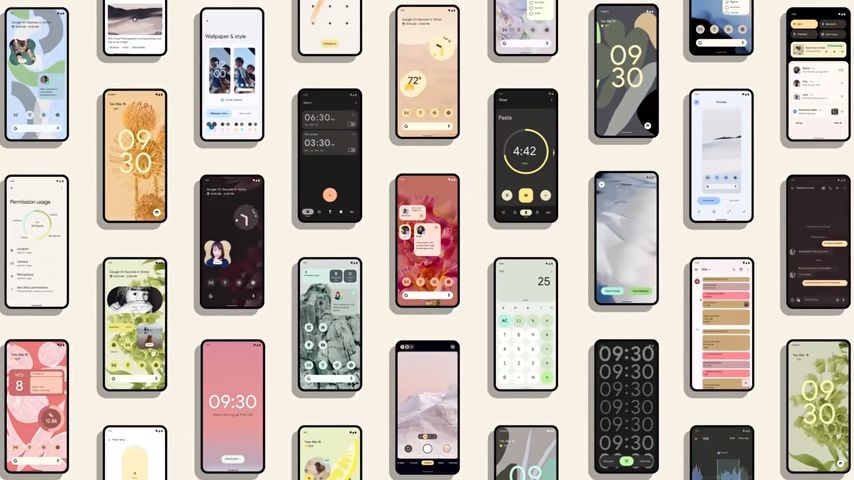
The theme of this year’s new Android 12, at least on the Pixel, is “Material You.” Essentially, the Pixel 6 phones will look at your homescreen wallpaper and create a palette to color the system interface. Throughout the UI, there are whimsical Google touches, such as buttons of varying sizes and shapes.
Other than the excellent software, you’re getting an excellent phone too with the Pixel 6. You get a 6.4-inch, 1080 x 2400 OLED screen that refreshes at 90Hz, along with arguably the best point-and-shoot main camera around, a 50MP sensor backed by Google’s epic photo-processing algorithms. You also get a large 4,612 mAh battery and plenty of RAM to make sure the phone zips around. Add in a unique two-tone finish, and a really attractive price, and it’s hard to name anything else in this spot.
- The Google Pixel 6 has perhaps the best camera in smartphones right now -- as well as the best price. Look no further if you are on the market for an Android phone and you don't need all the bells and whistles.
|
Features: |
|
|
|
Pros: Cons: |
Best Android phone not sold in the US: OPPO Find X5 Pro

The OPPO Find X5 Pro is a highly polished premium flagship that can go toe to toe with the Samsung Galaxy S22 Ultra in almost every area except two: its zoom lens isn’t nearly as good, and it lacks a stylus. Otherwise, in all other areas, the OPPO Find X5 Pro either at least matches the Galaxy S22 Ultra or beats it. Let’s start with the display, the Find X5 Pro’s 6.7-inch, WQHD+ OLED panel is every bit as good as the Galaxy S22 Ultra’s screens: it uses the same LTPO 2.0 technology, it gets virtually as bright to the human eye, and color reproduction and viewing angles are all a virtual tie. Then there’s the processor, the Find X5 Pro packs the same Snapdragon 8 Gen 1 chip that’s powering the Galaxy S22 Ultra’s US/China/India versions; and the Find X5 Pro’s 50MP main camera can trade blows with the S22 Ultra’s main cameras in any condition.
As for areas in which the Find X5 Pro wins, there are objective wins like the Find X5 Pro having a noticeably superior ultra-wide camera; and there are subjective wins, like the Find X5 Pro’s ceramic unibody design feeling a bit more comfortable and premium in the hand.
If you know that you don’t care about the stylus or being able to grab clean 10x zoom photos, the Find X5 Pro is an excellent alternative to the Galaxy S22 Ultra.
- The Find X5 Pro can go toe-to-toe with the Galaxy S22 Ultra in almost every area, so if this phone is available in your region, it's a great alternative to Samsung's flagship.
|
Features: |
|
|
|
Pros: Cons: |
Best for Multitasking: Microsoft Duo 2

If productivity is paramount, then two screens are obviously better than one, and right now the only dual-screen phone on the market that isn’t running on outdated hardware is the Microsoft Duo 2. Bringing back the premise of the original, the Duo 2 is essentially two screens attached by a very well-built 360-degree hinge. While the first model had a very mediocre single-camera setup, an outdated SoC (even at the time of shipping), and a small battery, the Duo 2 improves on all three of these areas.
First, there’s a proper camera now, consisting of a 12MP, f/1.7 main, 16MP ultrawide, and a 12MP 2x telephoto zoom lens. Unfortunately, this also means the machine has a camera protrusion now, so the two screens cannot flip backward and stay flat as before.

Next, Microsoft put the Snapdragon 888 into the Duo 2, which is still today the best SoC in Android. The original Duo shipped with Snapdragon 855 at a time when the 865 was already out. The battery capacity has also been increased to 4,449 mAh, which despite the two screens, can power the machine for a full 12-, 13-hour day on a single charge. The bezels around the screen have also shrunk a bit — though they’re still sizable — and the screen refresh rate has been bumped up to 90Hz. So in terms of hardware, the Duo 2 is an improvement in every way.
When the Microsoft Duo 2 works as intended, this thing is a multitasker’s dream: run two apps at the same time on separate screens, or stretch one app across two screens to see more content. Or fold the phone halfway and watch videos or take video calls hands-free. Another usage I enjoy is holding the phone “sideways,” and using the bottom screen to display a keyboard while the top screen is showing Google Docs or WhatsApp. It reminds me of old-school clam-shell PDAs. The possibilities aren’t quite endless — but there are many of them.
However, the Duo 2 still suffers from some of the software bugs that plagued the first Duo, including slow reactions to switching orientations or one screen freezing a bit while the other screen remains active. The bugs don’t happen as frequently as on the original Duo, but it’s still noticeable at least once or twice a day if it is your main phone. There’s no sugar-coating this: the Microsoft Duo 2 is a bit rough around the edges. But still, if multitasking on a mobile device is your number one goal, it’s hard to top what this phone can do.
- The Microsoft Duo 2 brings much improved hardware and slightly improved software over the first generation. The result is a dual-screen phone that can more than most phones.
|
Features: |
|
|
|
Pros: Cons: |
If we must pick the best overall phone here, it’d be the Galaxy S22 Ultra. But the Google Pixel 6 being several hundred dollars cheaper makes it very, very appealing. For those who don’t mind importing, the OPPO Find X5 Pro rivals the Galaxy S22 Ultra in many areas (and wins in some). But ultimately, if you have money to spend though, the Galaxy Z Fold 3 is still the ultimate do-it-all device.
The post These are the Best Android Phones to buy in 2022: Samsung, Google, OnePlus, and more! appeared first on xda-developers.
from xda-developers https://ift.tt/tceFRTU
via IFTTT








